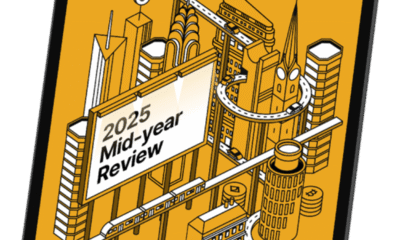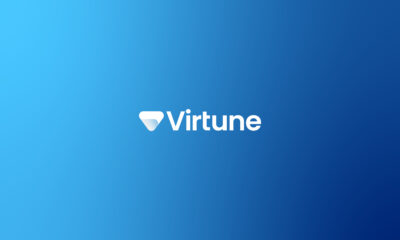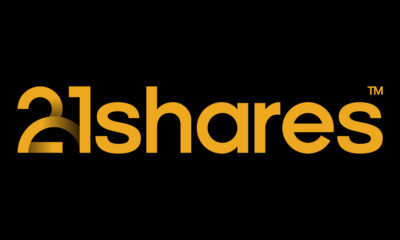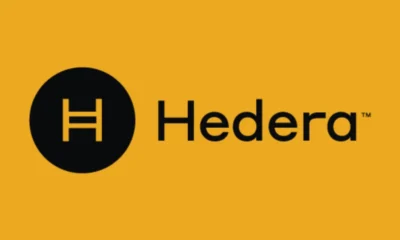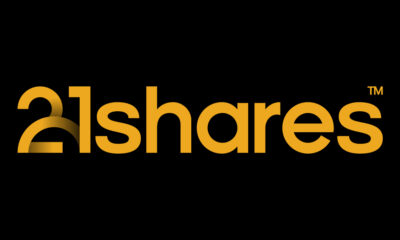Nyheter
Performance Drivers and Underlying Developments: What Happened in Crypto in October?
Publicerad
2 år sedanden
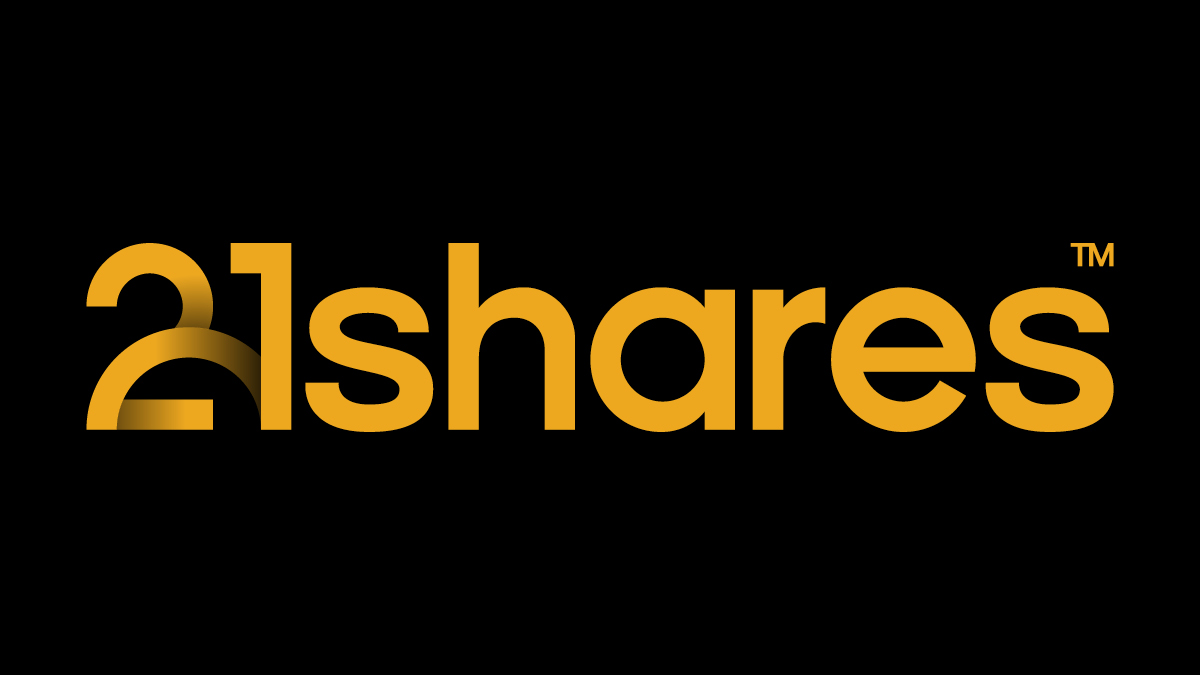
October was a turbulent month in macroeconomics, bringing tailwinds to crypto. Bitcoin has decoupled from the S&P500 amidst the turbulent macro environment, recording a 0.3 correlation this month. Historically, Bitcoin has been considered a risk-on asset, but recent price action suggests that investors may turn to Bitcoin as a flight to quality. Bitcoin and Ethereum increased by 27.92% and 8.30% over the past month, respectively. The biggest winner of this month was Solana, soaring by 63.44% on the back of a recent upgrade on its network that would make it a more favorable option for developers; we delve deeper into what this upgrade means later in this report. Bitcoin’s scalability solution, Stacks, also increased by 31.44% in price and 55.49% in assets under management after speeding up the transaction process. Within decentralized finance applications, Aave was the biggest winner, increasing by 23.99%.
Figure 1: Price and TVL Development of Major Crypto Sectors in October 2023
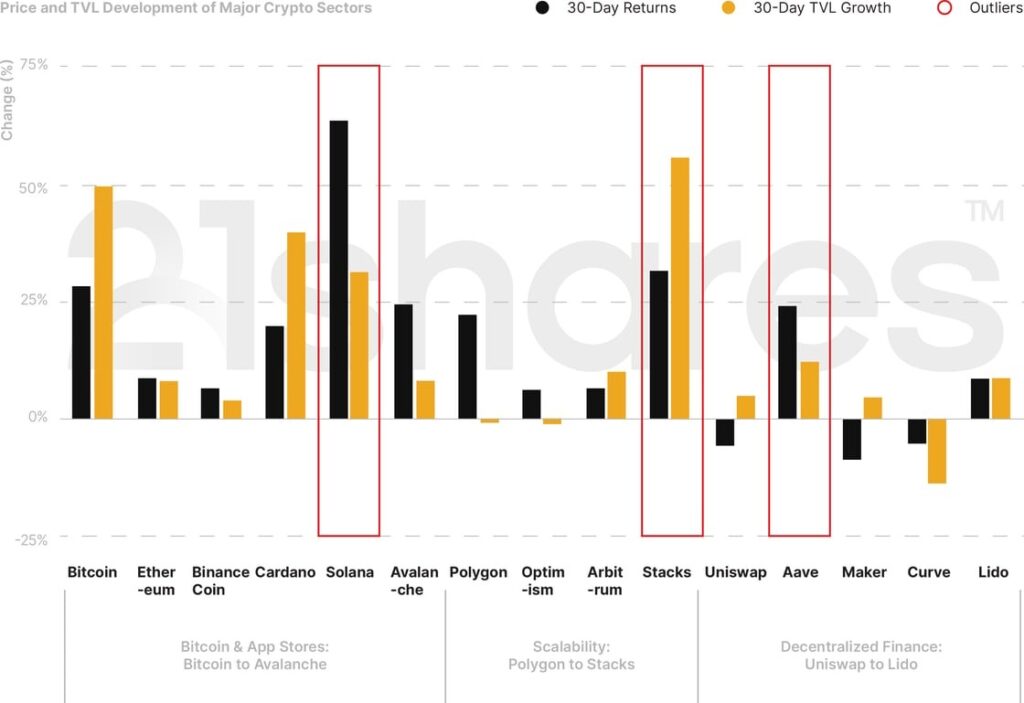
Source: 21shares, CoinGecko, DeFi Llama. Data as of October 30, 2023.
5 Trends to Remember from October
Macro Factors Contributing to Bitcoin’s Performance
China’s $14 trillion debt crisis, instigated by Chinese real estate giants a few months ago, seems to have contributed to Bitcoin’s performance over the past month. Historically, financial crises in China are inversely correlated with Bitcoin’s price and active addresses, as shown in the figure below. At the brink of the pandemic in January 2020, the People’s Bank of China injected $115B into the economy by reducing the deposit reserve ratio in financial institutions by 0.5 percentage points. A week after the announcement, Bitcoin’s price jumped by 13%, and active BTC addresses increased by 48%, according to data provider Glassnode.
Figure 2: Bitcoin’s Performance Amid Financial Crises
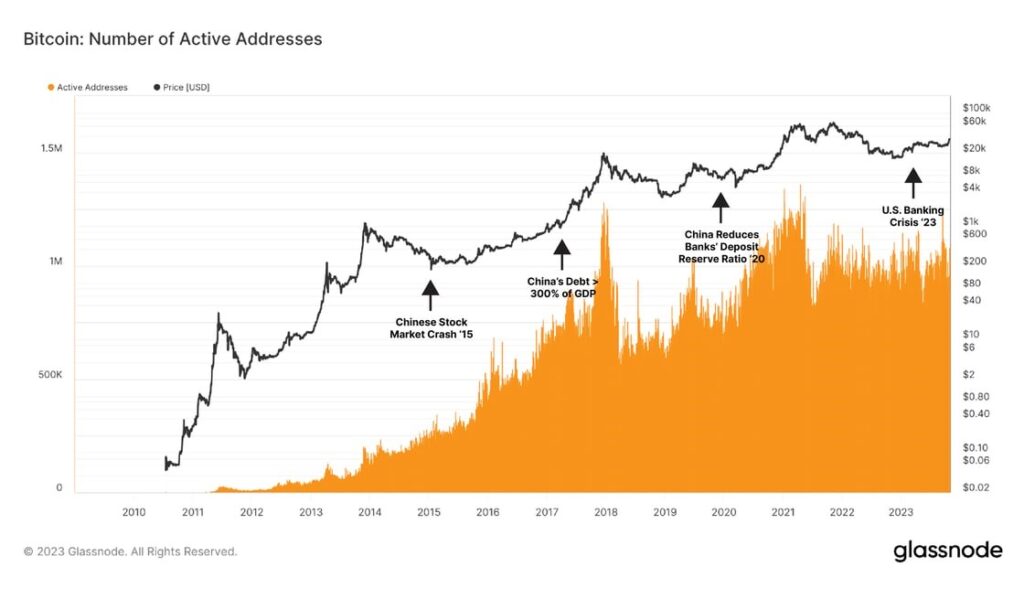
Source: 21shares, Glassnode
Another contributor to the flight to Bitcoin could be the U.S. public debt-to-GDP ratio, estimated to have reached 97.6% in October. In 2022, the Federal Reserve added $267.1B to its money supply, and it will need to print more in the long term to service its 33 trillion-dollar debt, up from $30.93 trillion last year. Bitcoin’s narrative as a hedge against monetary debasement shines brighter amid this macroeconomic environment. Moreover, Bank of America’s unrealized losses on securities rose to $131.6B after the 10-year U.S. Treasury yield reached 4.93%, a figure not seen since 2007, before the Global Financial Crisis. Many investors consider U.S. Treasuries the best proxy of a “risk-free” rate and thus view them as an opportunity cost – lower expected yields lead to lower discount rates, which result in a higher value for risky assets like stocks and crypto.
Bitcoin Derivatives on the Rise
The surge in Bitcoin’s performance amid the turbulent macroeconomic environment invited new market participation in the crypto derivatives market. Bitcoin options open interest on all exchanges reached an all-time high towards the end of October, as shown in the figure below, reaching over the $16B mark, which could signal impending volatility to either side. The Chicago Mercantile Exchange (CME) is on the brink of toppling Binance, the world’s largest crypto derivatives market by trading volume so far, making up close to 25% of BTC futures open interest market. In October, CME accrued $3.54B in notional open interest in Bitcoin, only 8% less than Binance’s. On Deribit Exchange, the largest crypto options exchange, combined notional open interest in Bitcoin and Ethereum options has surged to $20.5B, paralleling the late 2021 bull market peak, which signals that the risk appetite is picking up among investors.
Figure 3: Bitcoin Options Open Interest
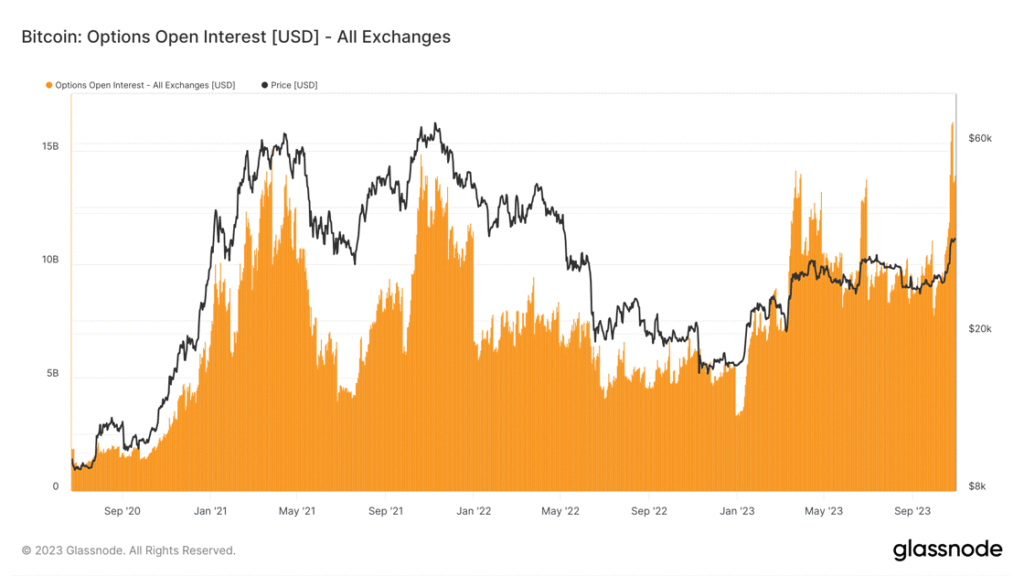
Source: Glassnode
CBDCs Coming More into the Spotlight
Central bank digital currencies (CBDCs) have emerged this month across many jurisdictions. For the first time, the world’s first CBDC, the digital yuan, was used to settle a cross-border deal of 1 billion barrels of crude oil on the Shanghai Petroleum and Natural Gas Exchange (SHPGX) on October 19—a significant milestone for e-CNY, which has seen a 35% yearly increase in cross-border settlements. Moreover, Ethereum also rose as an infrastructure layer for Mastercard’s initiative to tokenize the eAUD, implementing the KYC verification through the fintech giant’s digital identity solution to govern the CBDC’s transactions. On October 18, the European Central Bank (ECB) announced the beginning of the preparation phase of its digital euro. The ECB has been exploring the design and distribution parameters of its CBDC since October 2021. Established payment providers such as Mastercard are actively working on initiatives to foster collaboration between CBDCs and stablecoins. A recent example is their pilot program, which aims to establish interoperability between CBDCs and stablecoins, ensuring compatibility with DeFi platforms, which should reduce the gap and introduce further synergy.
Extrapolating Blockchain’s Value Proposition Beyond Traditional Finance
Vodafone completed a proof of concept that enhances the outdated global trade ecosystem. The initiative, done in collaboration with Sumitomo Corporation, Chainlink Labs, and InnoWave, introduces a system for seamlessly exchanging digitized trading documents dispersed across multiple blockchains and platforms to overcome the fragmentation present in traditional systems. By leveraging Chainlink’s CCIP, the initiative demonstrated how trading firms could avoid unnecessary cargo movement delays by streamlining the exchange of shipping receipts in a standardized way across multiple parties while offering an automated mechanism for executing certain trading agreements, such as triggering cargo insurance if a ship detects fire across its inventories. This is a noteworthy development as switching from the current system of transferring physical paper bills could save $6.5B in direct costs. However, there needs to be a mechanism for interconnecting the plethora of platforms involved in the digitization process, which is why this could be a key business opportunity for Chainlink to expand its interoperability services beyond financial applications and target the 32T global industry.
Solana to Become More Decentralized while Enabling Confidential Transactions
Solana’s latest software upgrade (v1.16) introduced several notable enhancements. The improvements include reducing validator hardware requirements by reducing RAM usage from 120 GB to 39 GB and fine-tuning for bandwidth constraints. However, the standout feature is the ability to encrypt transactional details, such as the number of transferred tokens and the total balance of both counterparties, while preserving auditing rights to ensure compliance via Zero Knowledge Proofs (ZKP) decryption mechanism. ZKP refers to a method where one party can prove possession of certain information without revealing the underlying content.
This is vital as it enables users to transact confidentially, a key factor for institutional adoption. In addition, the reduced hardware requirements make it easier to be supported by a broader range of validators, thus making it less prone to centralization. Solana’s recent surge in inflows, reaching levels not seen since 2022 ($24M), coupled with a consistent rise in daily active users for five consecutive weeks, as seen in Figure 4, underscores the enthusiasm for this overlooked upgrade. It is worth noting that FTX-related wallets were spotted sending ~$35M worth of SOL to a few exchanges, as well as unstaking $50M worth of the token. This might exert some selling pressure in the coming weeks, so we’ll be closely monitoring.
Figure 4: Solana Daily Active Addresses

Source: TheBlock
What to Expect
Bitcoin Becoming a Tech Play and Growing Beyond a Hedge Against Monetary Debasement and Counterparty Failure
In October, Bitcoin saw significant developments aiming to expand its capabilities. BitVM, a new Virtual Machine, was introduced to enable more complex computations, similar to Ethereum’s smart contracts. The key distinction lies in BitVM’s off-chain execution of applications, which are then verified on-chain, akin to rollups like Arbitrum and Optimism. Thus, this approach avoids Bitcoin’s high blockspace costs while introducing more sophisticated applications without implementing breaking changes to Bitcoin’s codebase. Still, challenges like managing the vast amounts of data generated off-chain and the considerable communication overhead must be addressed for this innovation to become practical.
In a similar context, Stacks, the Bitcoin scaling layer, introduced the sBTC testnet. sBTC is a synthetic asset pegged 1-to-1 to BTC, allowing for smart contracts on Stacks and non-custodial redemption to BTC. This innovation is vital because it enables Bitcoin programmability and offers scalability for developments like Ordinals and BRC20 without altering Bitcoin’s codebase, aligning with BitVM’s goals. Both of these innovations are pivotal in transforming the use of Bitcoin and expanding its utility to a broader user base.
On another note, Lightning Labs launched Taproot Asset Daemon’s mainnet alpha, harnessing the 2021 Taproot upgrade to enable Bitcoin-based asset issuance and management on the Lightning Network. This innovation transforms Bitcoin into a versatile, multi-asset payment network, facilitating transactions with various currencies, including stablecoins and real-world assets. Notably, despite challenging market conditions and diminishing interest in Bitcoin over the past two years, the growing adoption of the Lightning Network is striking, as seen below, with a substantial 25% of its activity focused on microtransactions for gaming and streaming. This underscores Bitcoin’s potential as both a medium of exchange and a store of value when combined with innovations like the LN. However, addressing critical issues such as the recent Replacement Cycling Attack is essential for widespread Lightning Network adoption. Finally, It’s worth mentioning that web interest in Bitcoin has surged to levels last observed during the banking crisis in March, reflecting the improving sentiment surrounding the asset.
Figure 5: The Growth of Bitcoin’s Lightning Network Utilization
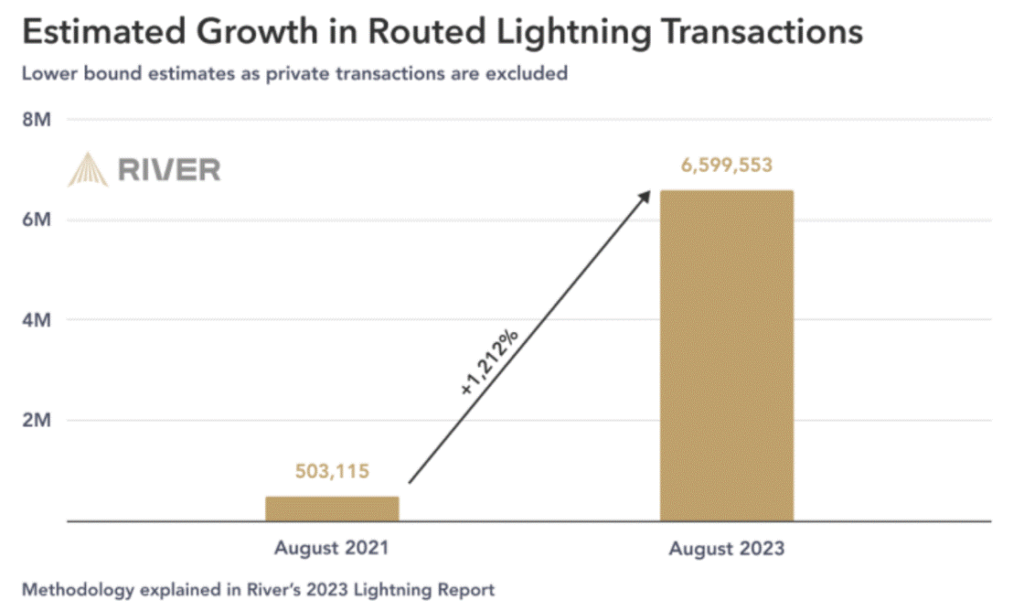
Source: River Financial Services
Cosmos Emerging as Infrastructure of Choice for Applications Seeking Unrestricted Customizability
Although Optimism, Arbitrum, and others pushed frameworks to help transform applications into standalone networks, the level of customizability is still limited by the design restrictions of Ethereum’s operating system (EVM). As a result, Cosmos is emerging as the go-to platform for applications seeking greater customizability with its flexible app-chain model.
Consider Celestia, a modular data availability network that chose Cosmos for its native interoperability (IBC) and modular architecture. Celestia innovatively separates key blockchain functions like execution, settlement, consensus, and data availability (DA), addressing the high costs of Ethereum data storage by isolating DA from consensus. Recently, Celestia launched Blobstreams on its mainnet, a solution tailored for L2 networks, with commitments from Arbitrum and Manta Network to adopt the solution. This integration aims to reduce data submission fees on the Ethereum mainnet, particularly benefiting Arbitrum, which currently faces the highest fee burden among scaling networks for submitting data on Ethereum.
Another is DyDx, the largest crypto perpetual protocol by volume. Initially part of the Ethereum ecosystem, the project has now transitioned to its own application-specific blockchain on Cosmos. With this shift, DyDx achieved a fully decentralized order book, offering a trading performance similar to centralized exchanges. Additionally, DyDx has established its validator set, ensuring resilience against single points of failure—a notable difference from many L2 solutions relying on a limited number of sequencers. Remarkably, DyDx V4 enables users to pay trading fees with USDC, removing a hurdle for non-native crypto users and allowing seamless access to applications without needing a native token.
That said, EVM has several enhancements in the pipeline, including the Dencun upgrade to boost L2 throughput, account abstraction for a user-friendly experience with stablecoin payments, and shared sequencing networks to enhance L2 censorship resistance. While these improvements are promising, Cosmos’s current modular architecture remains ideal for projects wanting complete control over their application design. It’s worth mentioning that Cosmos has witnessed a sustained increase in active users in recent weeks, indicating growing network adoption.
Figure 6: Daily Active Users of Several Leading Networks
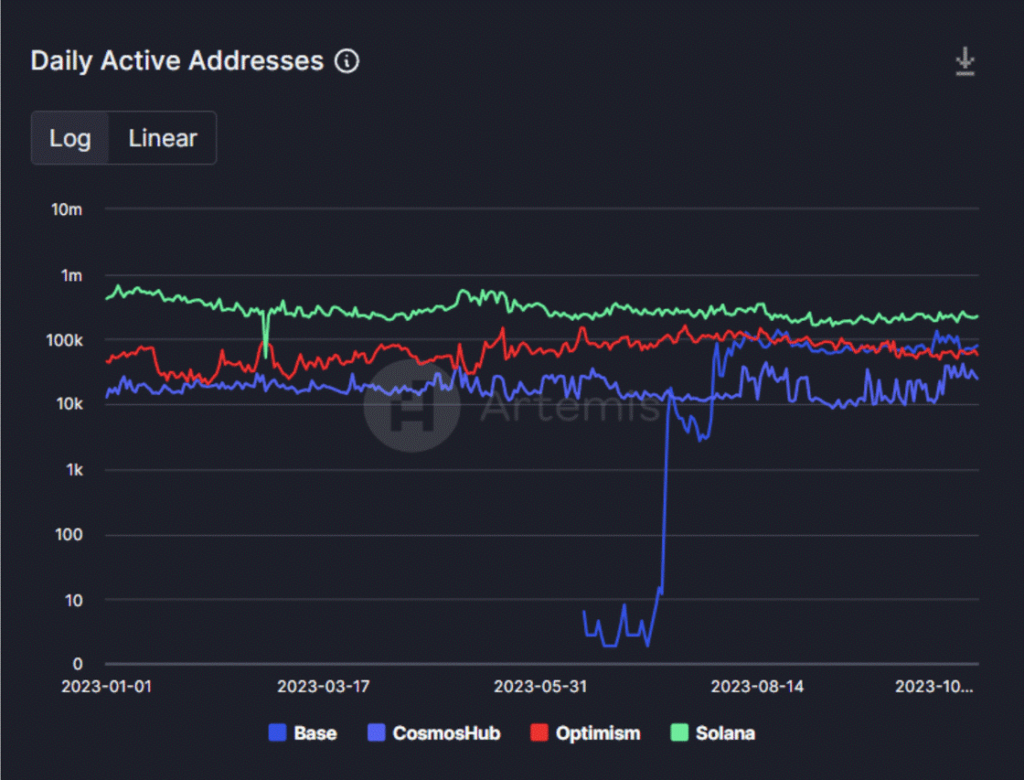
Source: Artemis
Bookmarks
• Insights from our previous newsletter were featured on Coindesk.
• Senior Research Associate Adrian Fritz was featured on Boerse Muenchen.
• Our Tokenization Report was featured on multiple media outlets, such as Laura Shin’s Unchained and Coindesk.
• Check out our webinar, where the Research Team introduced the State of Crypto, featuring a special guest.
• State of Crypto issue 10 is out: discover how crypto is already changing the world!
Next Month’s Calendar
These are the top events we’re closely monitoring in November.
• Open AI conference: on November 6 could revive interest in AI-related tokens
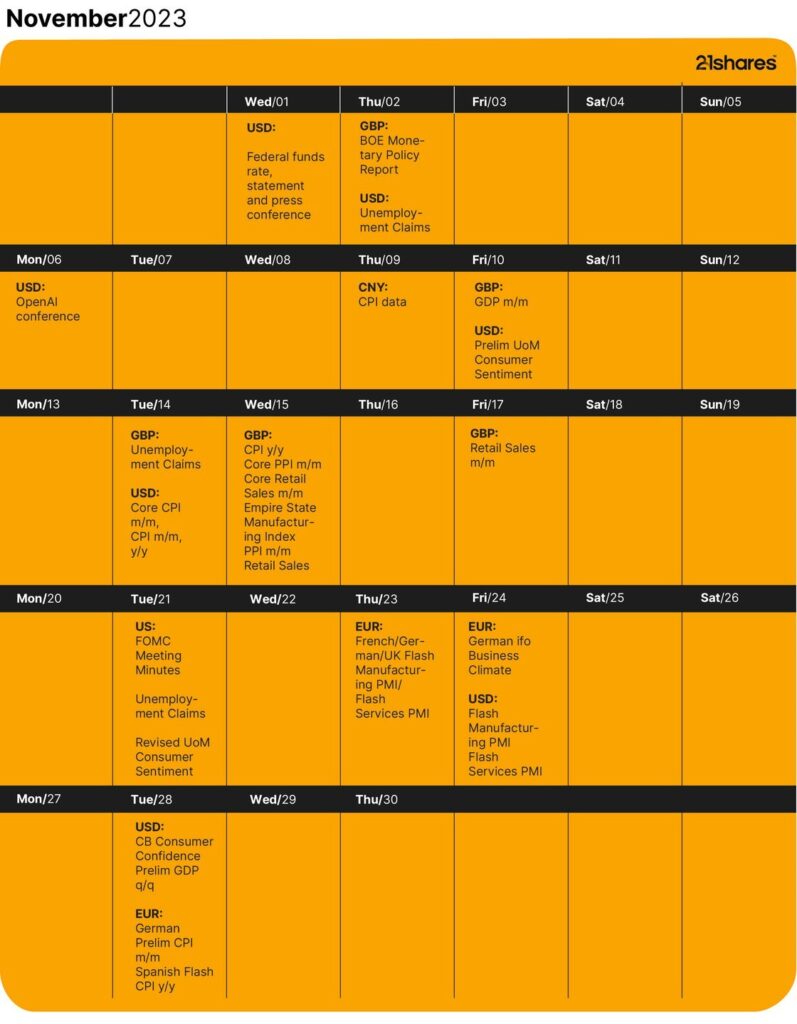
Source: 21shares, Forex Factory, CoinMarketCap
Research Newsletter
Each week the 21Shares Research team will publish our data-driven insights into the crypto asset world through this newsletter. Please direct any comments, questions, and words of feedback to research@21shares.com
Disclaimer
The information provided does not constitute a prospectus or other offering material and does not contain or constitute an offer to sell or a solicitation of any offer to buy securities in any jurisdiction. Some of the information published herein may contain forward-looking statements. Readers are cautioned that any such forward-looking statements are not guarantees of future performance and involve risks and uncertainties and that actual results may differ materially from those in the forward-looking statements as a result of various factors. The information contained herein may not be considered as economic, legal, tax or other advice and users are cautioned to base investment decisions or other decisions solely on the content hereof.
Du kanske gillar
Nyheter
Noteringar av ETF och ETP på Xetra den 17 juli 2025
Publicerad
4 timmar sedanden
18 juli, 2025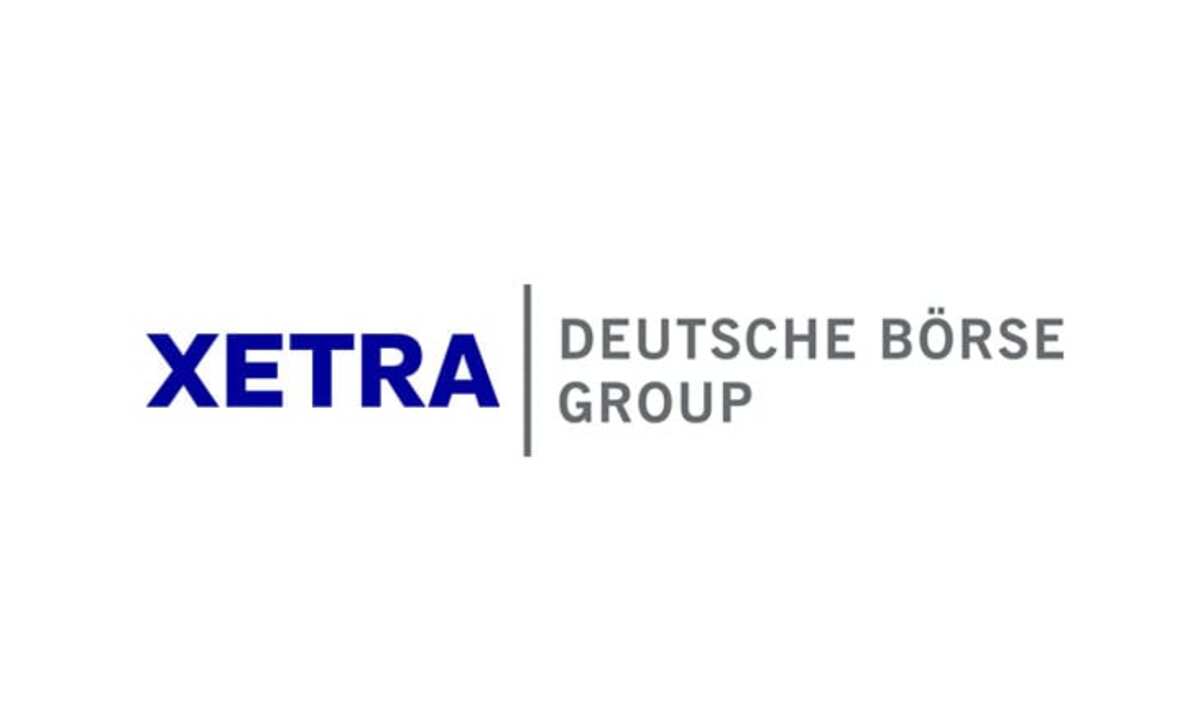
L&G S&P 100 Equal Weight UCITS ETF investerar i amerikanska large-cap-företag. ETFen inkluderar 100 blue-chip-företag från olika branscher. Fondens beståndsdelar är lika viktade.
Ossiam MSCI Europe UCITS ETF följer MSCI Europe Indexutveckling. Detta index inkluderar stora och medelstora företag från 15 utvecklade europeiska länder. Med 402 företag täcker det cirka 85 procent av börsvärdet i det europeiska aktieuniversumet.
| Namn | ISIN Kortnamn | Avgift | Utdelnings- policy |
| L&G S&P 100 Equal Weight UCITS ETF | IE000YELA4E3 SNPE (EUR) | 0,19% | Ackumulerande |
| Ossiam MSCI Europe – UCITS ETF 1C | LU3046617984 MEUR (EUR) | 0,12% | Ackumulerande |
Produktutbudet inom Deutsche Börses ETF- och ETP-segment omfattar för närvarande totalt 2 489 ETFer, 203 ETCer och 27 ETNer. Med detta urval och en genomsnittlig månatlig handelsvolym på cirka 25 miljarder euro är Xetra den ledande handelsplatsen för ETFer och ETPer i Europa.
Nyheter
XCSI ETF en swapbaserad fond som spårar 500 kinesiska småbolagsaktier
Publicerad
5 timmar sedanden
18 juli, 2025
Xtrackers CSI500 Swap UCITS ETF 1C (XCSI ETF) med ISIN LU2788421340, försöker spåra CSI SmallCap 500-index. CSI SmallCap 500-indexet spårar 500 medelstora och småbolag från Kina.
Den börshandlade fondens TER (total cost ratio) uppgår till 0,35 % p.a. Xtrackers CSI500 Swap UCITS ETF 1C är den enda ETF som följer CSI SmallCap 500-indexet. ETFen replikerar resultatet för det underliggande indexet syntetiskt med en swap. Utdelningarna i ETFen ackumuleras och återinvesteras.
Xtrackers CSI500 Swap UCITS ETF 1C är en liten ETF med tillgångar på 67 miljoner euro under förvaltning. Denna ETF lanserades den 31 juli 2024 och har sin hemvist i Luxemburg.
Referensindex nyckelfunktioner
CSI SmallCap 500 Index syftar till att spegla resultatet på följande marknad:
500 övervägande medelstora och små företag med börsvärde från hela världen av börsnoterade företag i Kina, handlas på Shanghai Stock Exchange (”SSE”) eller Shenzhen Stock Exchange (”SZSE”)
Viktad med fritt flytande justerat börsvärde
Halvårsvis indexöversyn
Handla XCSI ETF
Xtrackers CSI500 Swap UCITS ETF 1C (XCSI ETF) är en europeisk börshandlad fond. Denna fond handlas på flera olika börser, till exempel Deutsche Boerse Xetra och London Stock Exchange.
Det betyder att det går att handla andelar i denna ETF genom de flesta svenska banker och Internetmäklare, till exempel DEGIRO, Nordnet, Aktieinvest och Avanza.
Börsnoteringar
| Börs | Valuta | Kortnamn |
| XETRA | EUR | XCSI |
| London Stock Exchange | USD | XCSI |

Detta är en jämförelse av olika Halal ETFer, som täcker alla börshandlade fonder som endast investerar halal-aktier. Låt oss vara direkta: De flesta halal-ETFer är dyra, dåligt diversifierade och underpresterar gentemot aktiemarknaden. Men det finns några värda att överväga, och ännu viktigare, det finns ett bättre sätt att investera som vi kommer till.
- Det finns fem US-noterade Shariah-kompatibla ETFer och en handfull över resten av världen
- Den svåra sanningen: De flesta halal-ETFer är dåliga investeringar, med kostnadskvoter 25 gånger högre än konventionella fonder.
- De enda ETFerna som är värda att överväga är SPUS för USA-exponering (om än dyrt med 0,49 %) och IGDA för global exponering.
Varför ETFer finns?
Visste du att 10 000 dollar investerade i Tesla 2013 skulle ha blivit 1 500 000 USD 2020?
Vi har alla hört sådana exempel, för att sedan tänka ”jag tar två av dem, tack! Här är 20 000 dollar!”.
Bara ett problem där: Det tåget har gått för länge sedan! För att Tesla, med ett marknadsvärde på 1 biljon dollar, ska ge dig den typen av avkastning, måste företaget bli större än hela världsekonomin! Du kan inte bara välja ett slumpmässigt företag och ”hoppas på det bästa”.
Du måste välja rätt företag. Och att välja rätt företag är hårt arbete och innebär att slita med bokslut, studera marknaden och göra alla möjliga tråkiga saker. Inte ens då garanterar ingenting att du skulle fånga något som liknar utvecklingen för Tesla.
Så vad ska man göra om de inte vill tillbringa sina dagar hopryggade över bokslut?
Diversifiera
Lägg inte alla dina ägg i en korg. Gör detta och du kommer att göra bra ifrån dig när gruppen av företag gör bra ifrån sig – men, kritiskt, inget enskilt företag kan förstöra din depå.
Hur investerar du i ett gäng aktier, hör jag dig fråga?
Det för oss bra till vårt nästa ämne: ETFer. Vad är en ETF, egentligen?
En ETF är en typ av investering som låter dig äga en liten bit av många olika saker samtidigt. Till exempel kan en ETF hålla ett gäng olika aktier, eller obligationer, eller till och med guld. På så sätt, om en av sakerna i ETFen går dåligt, kan de andra göra det bra och hjälpa till att balansera det. Du kan köpa och sälja ETFer precis som du skulle göra med alla andra aktier – men ”inuti” varje ETF finns en samling av massor av andra tillgångar.
På det sättet är att köpa en enskild andel av en ETF som att köpa små bitar av var och en av ETFens delar. Dessa bitar är inte alla nödvändigtvis lika stora, och de förändras också med tiden.
ETFer byts regelbundet (vanligtvis kvartalsvis), men vissa till exempel de av ARK Investment, aktivt förvaltade börshandlade fonderna, uppdateras så ofta som dagligen.
En jämförelse av olika Halal ETFer
Fram till för bara några år sedan fanns det bara tre halal-ETFer – alla var de inriktade på olika regioner, så det fanns inte mycket att jämföra. Men nu finns det många fler, även om halal ETFer förblir mycket dyrare än icke-halal ETFer.
Så innan du dyker in i de enskilda ETFerna är det värt att överväga vilka kriterier vi kommer att använda för att välja mellan de olika ETFerna:
- Utveckling (uppenbarligen). Vi behöver ett sätt att mäta det genomsnittliga resultatet för en given ETF under ett givet år. För det använder vi det pålitliga CAGR-måttet (kumulativ aggregerad tillväxthastighet). Tänk på CAGR som den genomsnittliga årliga avkastningen för en viss fond över en tidsperiod. (Vi kommer att göra detta från det datum då fonden lanseras)
- Topp 10 innehavskoncentration berättar hur diversifierad ETF är. När allt kommer omkring, om hela poängen med en ETF är diversifiering – skulle vi förvänta oss att topp 10 av en medelstor ETF (~100 aktier) representerar en liten del av det totala resultatet. Annars kan vi bara köpa dessa aktier direkt (och hoppa över avgifterna)
- Benchmark-jämförelse: för att se hur fonden står sig i förhållande till den totala marknaden. De flesta använder S&P 500 – listan över 500 av de största amerikanska företagen – som standardriktmärke. Vi kommer visuellt att jämföra var och en av fonderna med S&P 500 för att se inte bara den övergripande prestandan, utan också topparna/låglarna (”volatiliteten). Till skillnad från en berg-och dalbana, här – ju lägre volatilitet, desto bättre. Du kanske gillar topparna, men det som går upp måste komma ner, och dessa nedgångar testar verkligen en mans förmåga att sälja i slutet av livet. vi kan få liknande prestanda för mindre volatilitet, vi borde ta det.
Med dessa tre kriterier kan vi rangordna de olika halal-ETFerna. Ett problem du omedelbart kommer att stöta på när du hittar en ETF som är Shariah-kompatibel att investera i är att det bara inte finns så många av dem. Dessa börshandlade fonder är nästan lika sällsynta som en enhörning, men det blir fler och fler av dem. Det blir ännu värre när du bor utanför USA och inte har tillgång till hela menyn med ETFer.
Vi kommer till landspecifika begränsningar mot slutet. Vi kommer också att täcka en lösning på det här problemet, det vill du inte missa! Med det ur vägen, låt oss titta på de olika fonderna.
Översikt över Halal ETFer
Här är en tabell som visar en komplett lista över halal-ETFer över olika geografier och över olika segment av marknaden.
För ytterligare information om respektive börshandlad fond, klicka på kortnamnet i tabellen nedan.
| Kortnamn | Namn | Geografi | Asset |
| ISUS | iShares MSCI USA Islamic UCITS ETF | USA | Aktier |
| SPUS | SP Funds S&P 500 Sharia Industry Exclusions ETF | USA | Aktier |
| HLAL | Wahed FTSE USA Shariah ETF | USA | Aktier |
| SPRE | SP Funds S&P Global REIT Sharia ETF | USA | Aktier |
| ISWD | iShares MSCI World Islamic UCITS ETF | Globalfond | Aktier |
| IGDA | Invesco Dow Jones Islamic Global Developed Markets UCITS | Globalfond | Aktier |
| WSHR | Wealthsimple Shariah World Equity Index ETF | Globalfond | Aktier |
| UMMA | Wahed Dow Jones Islamic World ETF | Globalfond | Aktier |
| SPSK | The SP Funds Dow Jones Global Sukuk ETF | Globalfond | Sukuk |
| ISDE | iShares MSCI EM Islamic UCITS ETF | Emerging markets | Aktier |
Dessa halalindexfonder, även kända som Shariah-kompatibla ETFer, ger investerare en rad alternativ för etiska investeringar som följer islamiska principer. Varje fond spårar ett specifikt index eller marknadssegment och erbjuder diversifierad exponering mot halalinvesteringar över olika geografier och tillgångsklasser.
Ett bättre sätt att investera
Även om Halal ETFer är ett populärt val, har de betydande nackdelar – höga avgifter, dålig diversifiering och begränsad anpassning. Amal Invest erbjuder ett modernt alternativ: personliga halalportföljer som anpassar sig till dina mål, med lägre avgifter och bättre diversifiering än traditionella ETFer.
Halal ETFer i Europa
Inte alla halal-ETFer som vi beskrev ovan är tillgängliga i alla länder. I det här avsnittet kommer vi att diskutera de landsspecifika frågorna som relaterar till investeringar i halal-ETFer.
Utmaningen med i synnerhet Halal ETFer är att de vanligtvis handlar i låga volymer. När mäklarfirmor bestämmer sig för vilka aktier som ska inkluderas, använder de vanligtvis volymen som ett indrag för intresse. ”Låga volymer? Lågt intresse – det behöver vi inte lista”, kanske de säger.
Det ironiska är att dessa börshandlade fonderna äger några av de mest likvida aktierna i världen.
Kärnproblemen med Halal ETFer
Låt oss vara ärliga om vad som är fel med halal-ETFer 2025:
- Absurt höga avgifter – Du betalar 5-25 gånger mer än konventionella ETFer
- SPUS debiterar 0,49 % (490 USD årligen per investerad 100 000 USD)
- ISDE tar ut 0,85 % (850 USD årligen per investerad 100 000 USD)
- Jämför detta med bara 0,03 % för vanliga S&P 500 ETF:er Det är riktiga pengar som lämnar fickan varje år.
- Farlig koncentration – De flesta halal-ETFer har 40-70 % av sina innehav i bara 10 aktier
- Det är 2-3 gånger mer koncentrerat än S&P 500
- Du får inte den diversifiering du betalar för
- Du har fastnat för de aktier som ETF-leverantören beslutar är ”kompatibla”
- Dålig prestation – Meritlistan talar för sig själv:
- Flera fonder har faktiskt förlorat pengar under sin livstid (till exempel ISDE)
- Även de ”bra” är långt ifrån idealiska
- De flesta konsekvent underpresterar sina jämförelseindex
Vilket ska jag välja?
Om du måste använda en halal ETF, här är slutsatsen:
För USA-exponering:
- SPUS är ditt bästa alternativ, med en CAGR på 16,73 % sedan starten
- HLAL är ett bra alternativ som ger en avkastning på 14,98 % årligen
För global exponering
- IGDA är acceptabelt om du behöver internationell diversifiering
- Alla andra globala halal-ETFer bör undvikas på grund av dålig prestanda
Men här är sanningen: Halal-ETFer var en bra lösning när de var det enda alternativet. Men det är 2025 och du förtjänar bättre.

Noteringar av ETF och ETP på Xetra den 17 juli 2025

XCSI ETF en swapbaserad fond som spårar 500 kinesiska småbolagsaktier

En jämförelse av olika Halal ETFer

Valour XAUT SEK en digital tillgång uppbackad av fysiskt guld

Don’t miss this: 2025’s Mid-Year State of Crypto is Here

De bästa ETFer som investerar i europeiska utdelningsaktier

Nordea Asset Management lanserar nya ETFer på Xetra

Svenska investerare — 21Shares Nasdaq Stockholm-sortiment har just blivit starkare

Hetaste investeringstemat i juni 2025

De bästa ETFerna med fokus på momentum
Populära
-

 Nyheter4 veckor sedan
Nyheter4 veckor sedanDe bästa ETFer som investerar i europeiska utdelningsaktier
-
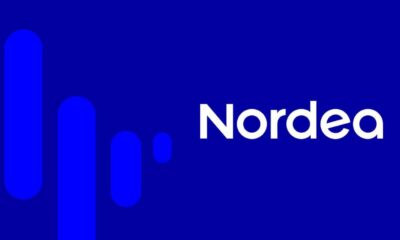
 Nyheter4 veckor sedan
Nyheter4 veckor sedanNordea Asset Management lanserar nya ETFer på Xetra
-

 Nyheter4 veckor sedan
Nyheter4 veckor sedanSvenska investerare — 21Shares Nasdaq Stockholm-sortiment har just blivit starkare
-

 Nyheter3 veckor sedan
Nyheter3 veckor sedanHetaste investeringstemat i juni 2025
-

 Nyheter3 veckor sedan
Nyheter3 veckor sedanDe bästa ETFerna med fokus på momentum
-

 Nyheter3 veckor sedan
Nyheter3 veckor sedan12 000 artiklar om börshandlade fonder
-
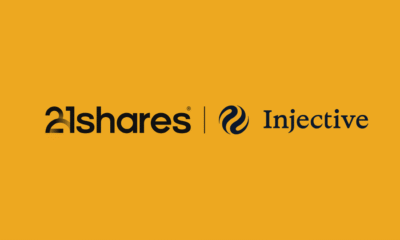
 Nyheter3 veckor sedan
Nyheter3 veckor sedanPrimer: Injective, infrastructure for global finance
-

 Nyheter2 veckor sedan
Nyheter2 veckor sedanREX Shares lanserar tre nya covered call ETFer i Europa


